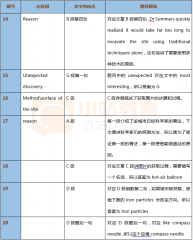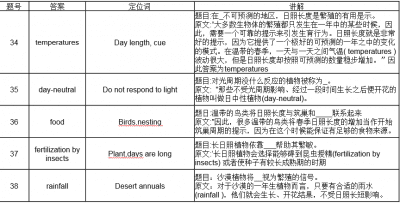雅思阅读低分的3大基本原因分析
中国的烤鸭们普遍不熟悉雅思的学术阅读模式,重技巧而轻实力,今天小编给大家带来了雅思阅读低分泥沼的3大基本原因分析,希望能够帮助到大家,下面小编就和大家分享,来欣赏一下吧。
雅思阅读低分泥沼的3大基本原因分析 助你出坑
我曾和在英国语言学校学习的同学们有很多接触,有不少同学连续参加雅思考试,花费了一年时间,十几万人民币,从北京考到英国,却始终没有过6.5。为了帮助他们解决问题,我曾对这些同学的学习状况做了一个调查。
调查的结果是这些同学的问题主要在阅读,因为听力和口语分数在到英国之后有了明显提高,语言环境和实践对于这两项语言技能提升非常关键。唯独阅读,他们无论在中国还是英国,分数始终没有超过6。而且阅读还影响了他们的写作,导致分数出现瓶颈,提升缺乏后劲。
调查结果表明,这些同学的阅读问题主要是以下几个方面:
第一、不了解学术阅读,阅读方法不科学
剑桥官方很明确地在雅思网站上说明:雅思阅读考的是学术场景下的阅读,而这种阅读方式是中国英语教学没有强调和专门训练过的。
所以,这些同学不知道什么叫做Skimming for gist(快速浏览把握文章主旨)和Scan for details(快速扫描特定细节)的阅读方式;不明白怎样去区分事实信息和主观论点;更不知道怎样去对文章去进行结构扫描,了解文章线索和脉络(Frame work of the Text, Contextual Clues, Coherence and Cohesion)。
这些阅读技能和策略(Reading Strategies)的缺乏导致他们阅读的时候不分主次,不会灵活调整阅读速度,只看见个别细节而不能把握它们之间的逻辑关系。所以他们在阅读里只能解出那些针对个别细节的小题目,对阅读技能要求比较高的题型,比博彩通如List of Headings(段标题,考察文章线索结构和把握段落章主题的能力)和True / False /NotGiven题(考察观点与事实、主观与客观的区别以及作者态度等),就明显力不从心。
根据我当时的统计,他们在这些题目上的正确率不足50%。在最近的雅思阅读里,这两种题型加起来超过了总题量的一半,这样的正确率当然没法得到好分数。
第二、偏重解题技巧Skills,忽视阅读实力Competence
因为着急尽快出国留学,所以这些同学往往是在已经拿到Conditionaloffer的情况准备应考,并必须在Deadline之前提交合格的雅思成绩。这样的学习计划使他们往往只在考试前去“抱佛脚”,听说有什么“阅读秘笈”、“9分方案”就趋之若骛。
这些技巧一学就会,一开始在他们还不熟悉雅思的情况下也显得非常有效——做第一张卷子得4分,了解技巧后再做马上就升到5分。实际上并不是这些阅读技巧有多少神奇之处,只是由陌生到熟悉以后自然的提高,然而同学们还是对此深信不疑。
但是雅思阅读毕竟是现在所有出国英语考试中阅读单项最难的一个,文章最长、题型最多、难度最大,对于阅读技能的考察非常全面深入。
迷信解题技巧而忽视实力的后果就像Castle in the air,吹得越神的技巧最后也让人摔得越惨。我在阅读单项上考过9——绝不是全凭技巧。所以我在课上从不鼓吹说9分靠万能技巧;相反,我还经常提醒同学:技巧有局限,9分靠实力。
第三、“以考试定学习”,没有积累
Deadline的压力导致这些同学仓促考试、匆忙准备,结果就是第一次考试大都没过关。第一次失利后,Deadline的压力又迫使他们马上去报三个月后的考试。
因此,学习计划完全是考试型的,而没有真正积累型的学习。把上次已经证明失败的做法简单重复一遍而没有总结经验教训,也没有提高和改进,这又有什么意义呢?
阅读是最需要积累的一项语言能力,词汇、句法乃至常见文章写法、思路,没有一段时间循序渐进的积累和能力的提升,阅读的能力——Competence就不会有实质的提高。
只凭技巧(Skills)没有实力(Competence)是不可能有长久的效果的。事实也证明:在技巧发挥到了极致,他们的分数上升也就到了头:长期徘徊在6分以下,就是因为他们的阅读实力还没有达到相应水准的缘故。
雅思阅读机经真题解析-Hunting Perfume in Madagascar!
A
Ever since the unguentari (古罗马时期玻璃器皿) plied their trade in ancient Rome, perfumers have to keep abreast of changing fashions. These days they have several thousand ingredients to choose from when creating new scents, but there is always demand for new combinations. The bigger the 'palette' of smells, the better the perfumer's chance of creating something fresh and appealing. Even with everyday products such as shampoo and soap, kitchen cleaners and washing powders, consumers are becoming increasingly fussy. And many of today's fragrances have to survive tougher treatment than ever before, resisting the destructive power of bleach or a high temperature wash cycle. Chemists can create new smells from synthetic molecules, and a growing number of the odours on the perfumer's palette are artificial. But nature has been in the business far longer.
B
The island of Madagascar (马达加斯加) is an evolutionary hot spot; 85% of its plants are unique, making it an ideal source for novel fragrances. Last October, Quest International, a company that develops fragrances for everything from the most delicate perfumes to cleaning products, sent an expedition to Madagascar in pursuit of some of nature's most novel fragrances. With some simple technology, borrowed from the pollution monitoring industry, and a fair amount of ingenuity, the perfume hunters bagged 20 promising new aromas in the Madagascan rainforest. Each day the team set out from their "hotel"-a wooden hut lit by kerosene lamps, and trailed up and down paths and animal tracks, exploring the thick vegetation up to 10 meters on either side of the trail. Some smells came from obvious places, often big showy flowers within easy reach. Others were harder to pin down. “Often it was the very small flowers that were much more interesting,” says Clery. After the luxuriance (肥沃) of the rainforest, the little-known island of Nosy Hara was a stark, dry place-geologically and biologically very different from the mainland. “Apart from two beaches, the rest of the island is impenetrable, except by hacking through the bush," says Clery. One of the biggest prizes here was a sweet-smelling sap weeping from the gnarled branches of some ancient shrubby trees in the parched interior. So far no one has been able to identify the plant.
C
With most flowers or fruits, the hunters used a technique originally designed to trap and identify air pollutants. The technique itself is relatively simple. A glass bell jar or flask is fitted over the flower. The fragrance molecules (分子) are trapped in this ‘headspace’and can be extracted by pumping the air out over a series of filters which absorb different types of volatile molecules. Back home in the laboratory, the molecules are flushed out of the filters and injected into a gas chromatograph for analysis. If it is impossible to attach the headspace gear, hunters fix an absorbent probe close to the source of the smell. The probe looks something like a hypodermic syringe, except that the 'needle' is made of silicone rubber which soaks up molecules from the air. After a few hours, the hunters retract the rubber needle and seal the tube, keeping the odour molecules inside until they can be injected into the gas chromatograph in the laboratory.
D
Some of the most promising fragrances were those given off by resins (树脂) that oozed from the bark (树皮) of trees. Resins are the source of many traditional perfumes, including frankincense and myrrh (乳香和没药). The most exciting resin came from a Calophyllum (胡桐)tree, which produces a strongly scented medicinal oil. The sap of this Calophyllum smelt rich and aromatic, a little like church incense. But it also smelt of something like fragrance industry has learnt to live without, castoreum (海狸香), a substance extracted from the musk glands of beavers and once a key ingredient in many perfumes. The company does not use animal products any longer, but it was wonderful to find a tree with an animal smell.
E
The group also set out from the island to capture the smell of coral reefs. Odors that conjure up sun kissed seas are highly sought after by the perfume industry. “ From the ocean, the only thing we have is seaweed (海带), and that has a dark and heavy aroma. We hope to find something unique among the corals,” says Dir. The challenge for the hunters was to extract a smell from water rather than air. This was an opportunity to try Clery’s new “aquaspace”apparatus (小装置) – a set of filters that work underwater. On Nosy Hara, jars were fixed over knobs of coral about 2 meters down and water pumped out over the absorbent filters. So what does coral smell like? “It’s a bit like lobster and crab,” says Clery. The team’s task now is to recreate the best of their captured smells. First they must identify the molecules that make up each fragrance. Some ingredients may be quite common chemicals. But some may be completely novel, or they may be too complex or expensive to make in the lab. The challenge then is to conjure up the fragrances with more readily available materials. “We can avoid the need to import plants from the rainforest by creating the smell with a different set of chemicals from those in the original material, ”says Clery. "If we get it right, you can sniff the sample and it will transport you straight back to the moment you smelt it in the rainforest. "
Question 14-18
The reading Passage has five paragraphs A-E
Which paragraph contains the following details?
Write the correct letter A-E in boxes 14-18 on your answer sheet.
NB You may use any letter more than once.
14. One currently preferred spot to pick up plants for novel finding
15. A new task seems to be promising yet producing limited finding in fragrance source
16. The demanding conditions for fragrance to endure.
17. A substitute for substance no longer available to the perfume manufacture
18. Description of an outdoor expedition on land chasing new fragrances.
Question 19-23
Do the following statements agree with the information given in Reading Passage 2?
In boxes 19-23 on your answer sheet, write
TRUE if the statement is true
FALSE if the statement is false
NOT GIVEN if the information is not given in the passage
19. Manufacturers can choose to use synthetic odours for the perfume nowadays.
20. Madagascar is chosen to be a place for hunting plants which are rare in other parts of the world.
21. Capturing the smell is one of the most important things for creating new aromas.
22. The technique the hunters used to trap fragrance molecules is totally out of their ingenuity.
23. Most customers prefer the perfume made of substance extracted from the musk glands of animals.
Question 24-26
Filling the blanks and answer the questions below with only one word.
A simple device used to trap molecules
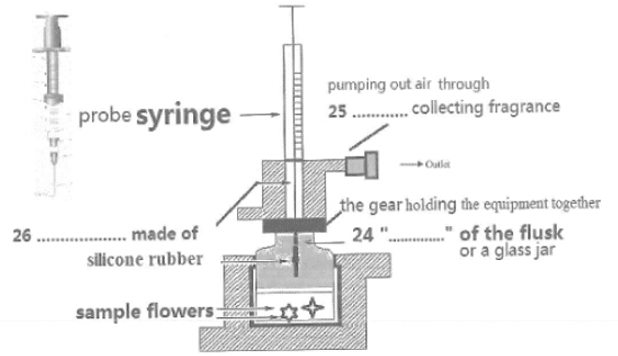
篇章结构:
体裁
记叙文
题目
马达加斯加寻香
结构
A段:介绍香气背景以及强调原料重要
B段:马达加斯加产香的优势及QI公司前往此处寻香
C段:提取香气原理
D段:从树脂提取能取代动物香气的成分
E段:前往海底捕获珊瑚香并重组创新所获得的香气
试题分析:
Question 14-18 题目类型:搭配题
Question 19-23 题目类型:判断题
Question 24-26 题目类型:填空题
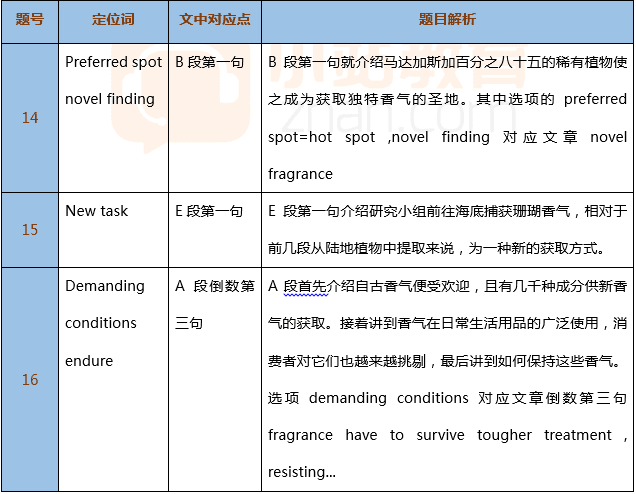
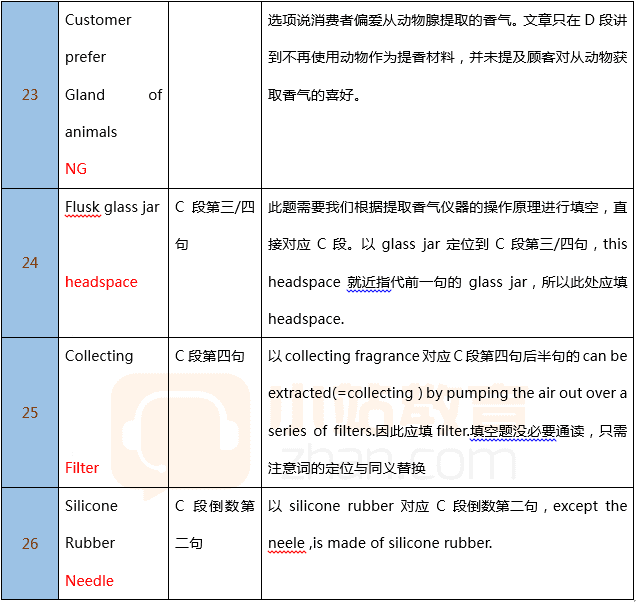
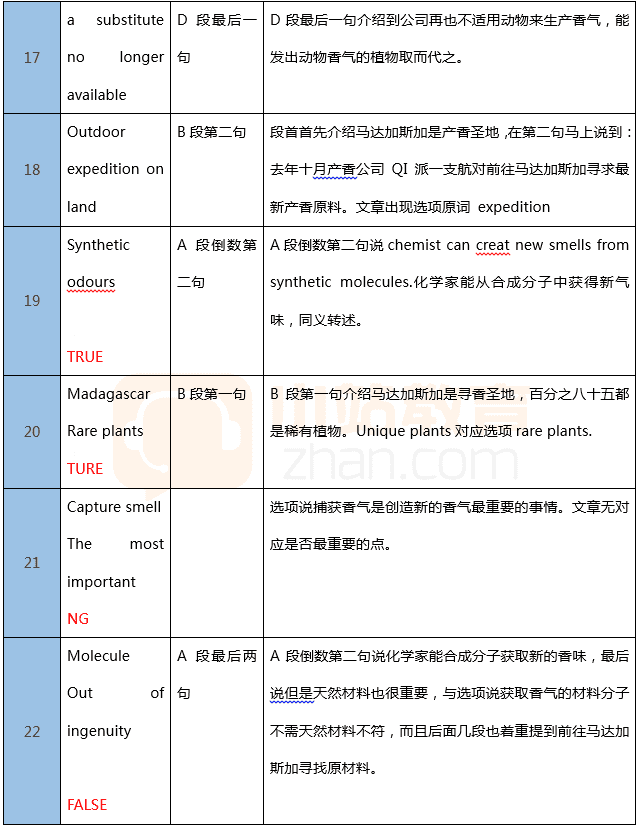
参考答案:
Version 22502 主题 马达加斯加
14
B
15
E
16
A
17
D
18
B
19
TRUE
20
TRUE
21
NOT GIVEN
22
FALSE
23
NOT GIVEN
24
headspace
25
filters
26
needle
雅思阅读低分的3大基本原因分析相关文章:


